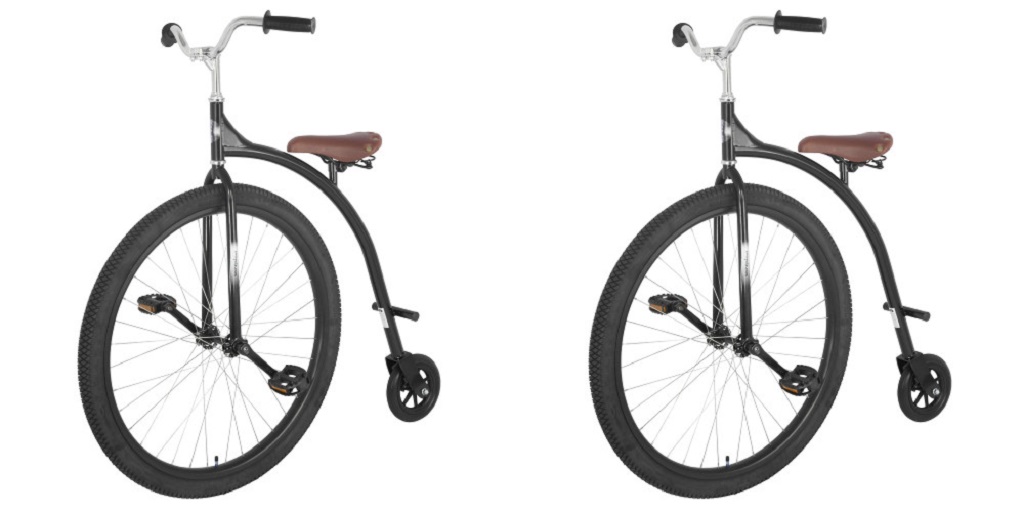For some reason or other, one of the directions in which the popular perception of a clown bike heads is in the direction of a bike with a larger front wheel and a small rear wheel.
Perhaps the reason is that many surviving pictures of athletes riding or posing with old school penny farthing bikes (for that is what these contraptions are called) show men clad in Victorian clothing.
Clown-like, to say the least, especially when you see it through a modern lens. But the truth is that though these bikes and their aura might be clown-like, there is no aspect about learning to ride one that is a joke.
Faster, Challenging in All the Right Ways
The first thing that’s warranted is a short explanation for why these bikes – which are not clown bikes in the truest sense of the word – look the way they do.
They lack both gears and a chain drive, which means there is effectively only one way to increase their speed: increasing the size of the wheel that’s driven by the crank arms.
A bigger wheel means a greater circumference, which equates to more distance traveled with each revolution of the wheel.
The other thing is that, since these bikes lack suspension mechanisms, the larger wheel can help smooth out irregularities in the road. Earlier iterations, which were smaller, were known as boneshakers.
The larger front wheel does make them faster, but it comes with its own challenges. One, since there is no chain drive and no geared mechanical advantage, speed and power are all up to the rider. It takes a lot of muscle to move.
On top of that, the fact that the wheel is so large also means that the saddle needs to be high enough for the rider to be able to reach the crank arms. This puts the rider – and by extension the center of gravity – much higher over the ground.
Even if not patently top heavy, a fall from a penny farthing can be a much more serious problem than an unplanned dismount from a bike.
This is further complicated by the fact that penny farthings are difficult to brake. If you stop too suddenly – whether through braking action or otherwise – and arrest the momentum of the machine, you will likely experience an unfortunate cascade of events collectively known as “taking a header.”
It is a series of events you (decidedly or not) do not wish to experience.
Another one of the challenges associated with learning to bring a penny farthing to a stop has to do with braking it and redistributing your weight so as not to cause the condition described above. Some riders learn to coast to a stop by anticipating the need; others brake gently and shift their feet from the pedals to the spokes over the rear fork; this presses down on the rear wheel and helps prevent it from skidding – which often happens if you brake too hard.
All the same, as there are challenges associated with learning to ride a regular bike, a clown bike, or some other odd bike, learning to ride a penny farthing will certainly require you to learn new skills.
Where to Get the Real Deal
Whether you’re in the running for a penny farthing, a unicycle, or some other type of clown bike or odd bike not covered here, you can learn more over at Unicycle.com. They carry a wide range of options, and among them are penny farthings in many sizes and therefore suitable for riders of all different heights. Check out their website and get in touch with their customer service if you have any questions before buying.
For more information about Circus Bike 20 Inch and 31.8 Seatpost Clamp Please visit: Unicycle.com.
